See all the winners of the 2019 Studio Prize.
Studio Brief | Each year, professors at the University of Virginia run a one-semester studio focused on a different urban planning challenge in New Delhi. The latest course looked at the city’s main river, the Yamuna. After extensive research and a weeklong trip to the region, students developed individual projects around the river, which were then integrated into a single master plan.
Investigation | For seven years, students at the University of Virginia have been stitching together a patchwork of master plans for the sprawling megacity of New Delhi. Each semester-long studio, co-taught by professor Pankaj Vir Gupta and lecturer María González Aranguren, drills down on a particular geographic or socioeconomic aspect of the capital.
The most recent studio, involving 13 students, focused on a 24-kilometer stretch of the Yamuna River, which bisects the city and provides both its drinking water and its sewage drain. The students divided into teams to research different aspects of the river, including its uses, its impact on health, and the housing stock surrounding it.
After several weeks of research, the students traveled to New Delhi, where they met with local political and community leaders; along the way, they saw how well—or how little—their classroom learning tracked with the real world. “They go to India with a lot of knowledge, and then they often have to forget it,” Aranguren says.
Back in Charlottesville, Va., each student chose a particular aspect of the research to develop into a project proposal—for example, one designed a plan to better handle sewage from nearby housing blocks, while another developed a scheme to reintroduce small-scale agriculture to the Yamuna flood plain. Finally, the class combined their projects into a master plan for the river—which is integrated with the previous semesters’ work.
The blend of intense research informed by personal interaction with the site impressed the judges, as did the studio’s growing database of master plans. “This is the kind of thing we hope students are doing,” said juror Thomas Fisher. “They are doing relevant, culturally grounded work that is advancing our thinking in a number of areas.”
And whether they ever pursue a project in a city like New Delhi or not, the experience, Gupta says, will make them better architects: “This very deep, real engagement with the world will allow them to feel comfortable no matter where they end up on their career path.”
Student Work |
Mixed-Use Social Housing for the Yamuna | Katherine Rush’s proposal rethinks high-density residential typologies in the region, proposing a user-controlled “gradient of privacy” that can change over the course of each day. An analysis of existing low-income housing in New Delhi showed that many residents of dense slums live with only 1 to 5 square meters of space per person. With stackable furniture, movable partitions, and terraces and courtyards shared by neighbors, this model provides 8 to 10 square meters per person, while giving residents more agency over their surroundings.
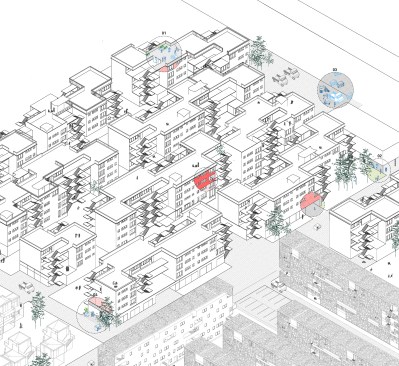
Katherine Rush
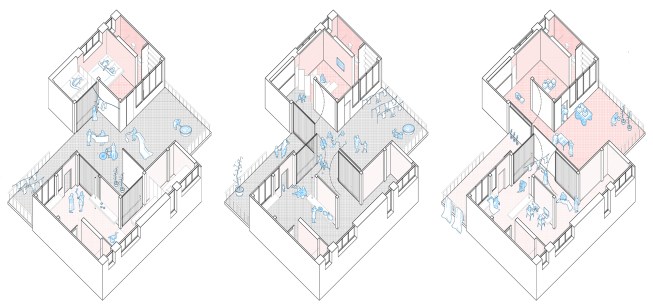
Katherine Rush
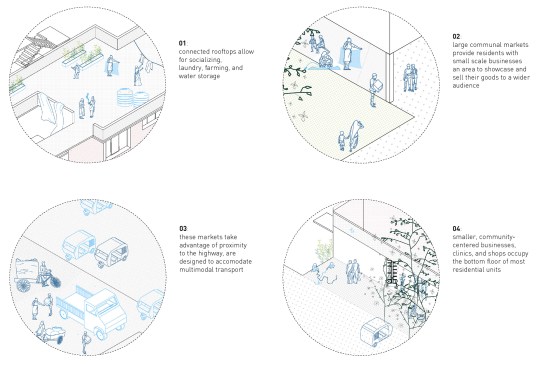
Katherine Rush
Approaching Sanitation: A Typological Response to the Study of Sanitation Infrastructure in New Delhi | A lack of bathroom infrastructure means that one of the main contaminants of the Yamuna River is fecal matter. Students analyzed the bathroom infrastructure in the region (opposite), comparing population density with the percentage of homes with toilet access to determine areas that most need intervention. With that information, Darcy Engle developed proposals ranging from rooftop facilities, to community towers that accommodate toilets and areas for bathing and laundry (above and right), to large public facilities that serve as community catalysts, incorporating retail and child care.
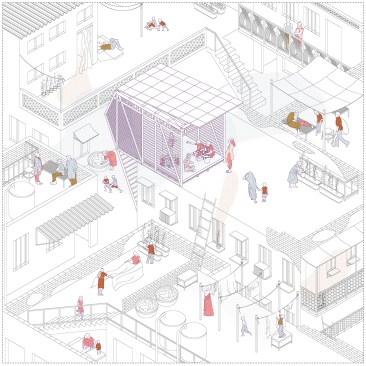
Darcy Engle
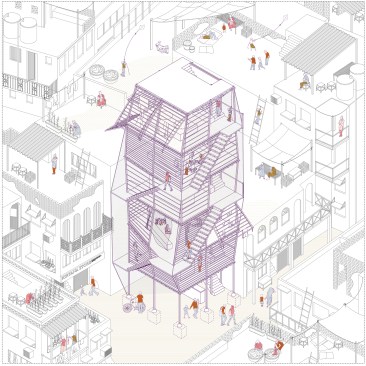
Darcy Engle

Darcy Engle

Darcy Engle
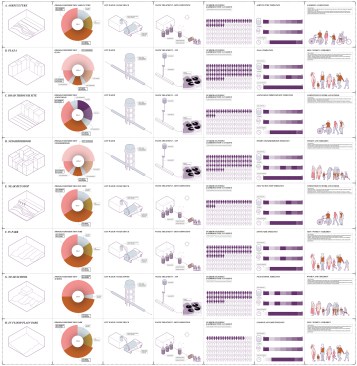
Darcy Engle
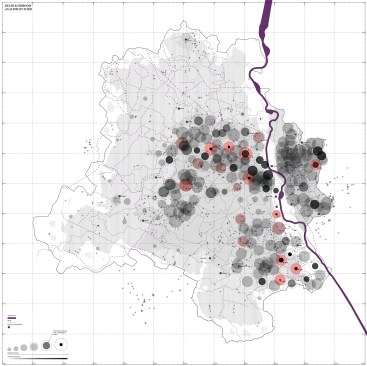
Darcy Engle
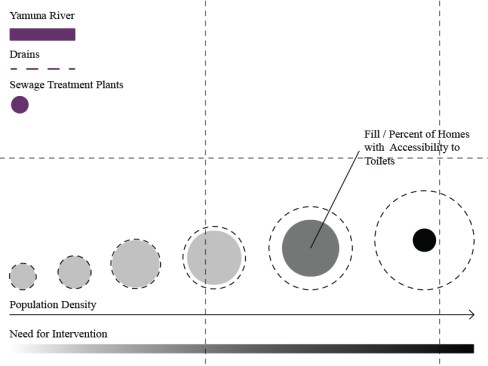
Darcy Engle
A Piece of the City: Re-Centering New Delhi and the Yamuna River | Each of the individual student proposals were combined into a single master plan, or piece of the city, that addresses larger regional infrastructure questions related to ecology, urbanism, infrastructure, and social welfare.
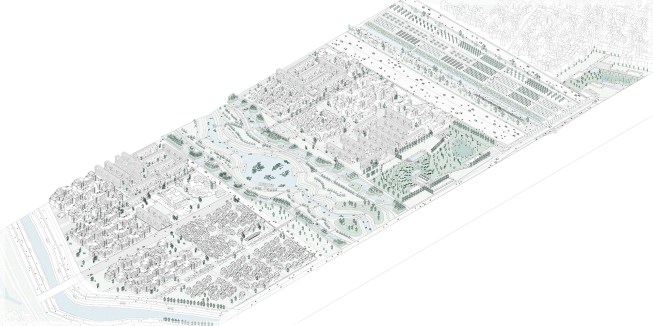
Courtesy University of Virginia, School of Architecture
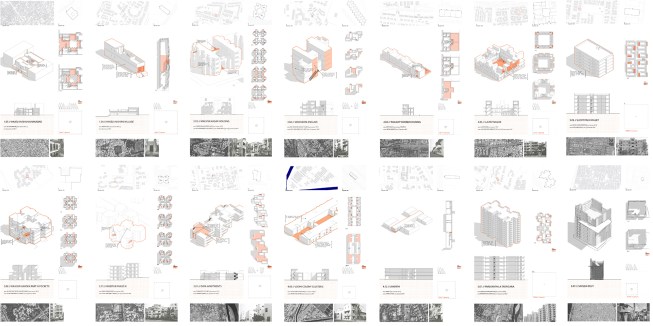
Courtesy University of Virginia, School of Architecture
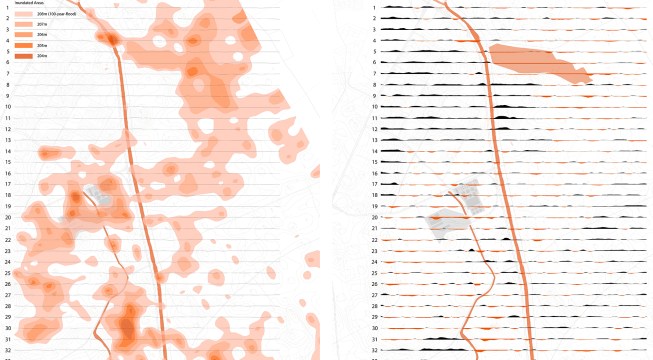
Courtesy University of Virginia, School of Architecture
Studio Credits
Course: The Yamuna River Project: Re-Centering New Delhi, A Piece of the City
School: University of Virginia, School of Architecture
Level: M.Arch. (with pre-professional degree in architecture), Year 2; M.Arch. (without pre-professional degree in architecture), Year 3; Master of Landscape Architecture, Year 2, 2.5, and 3; B.S. in Architecture, Year 4; Master of Urban + Environmental Planning, Year 2. (The studio is a research or advance studio offered to students in their last semesters of bachelor’s or master’s degree.)
Duration: Fall 2018 semester
Instructors: María González Aranguren (lecturer of architecture); Pankaj Vir Gupta (professor of architecture)
Students: Darcy Engle, Katherine Rush, Jing Huang, Hangyu Shi, Christian Kochuba, Cong Nie, Gene Louise Kimberly Corral, Jonathan Chu, Yousef Almana, Yasmin Ben Ltaifa, Andrew Helmbrecht, Kristen Von Bampus, Mennen Middlebrooks (work submitted)
